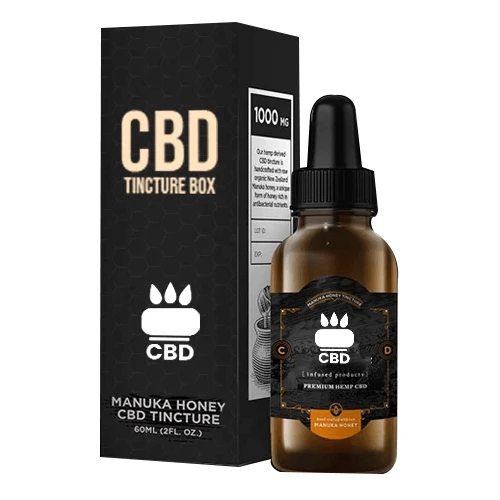In today’s marketing fast-paced, consumer-driven world, where products compete for attention on crowded store shelves and online marketplaces, packaging plays a pivotal role in capturing the interest and loyalty of customers.
Custom Rigid Boxes are more than just a protective covering for products; it is a powerful marketing tool that can significantly impact consumer perceptions and buying decisions.
This article will explore the importance of packaging in marketing, discussing its key benefits and unveiling how packaging can influence consumer behavior.
Marketing – Grabbing Attention and Creating Brand Awareness
In a sea of similar products, the packaging is a visual magnet that catches the consumer’s eye and differentiates a brand from its competitors.
The packaging design, colors, fonts, and imagery should align with the brand identity and create instant recognition.
A well-designed package can unique the curiosity of customers, enticing them to learn more about the product. When done right, packaging acts as a silent salesman, communicating the brand’s values and personality, thus fostering brand awareness.
Providing Product Information and Assurances – Marketing
Wholesale custom display boxes serve as a medium to convey essential information about the product, including its features, usage instructions, ingredients, nutritional facts, and safety warnings. Clear and concise product information builds trust and reassures consumers about the quality and value they can expect from the brand.
- Moreover, packaging can communicate additional benefits, such as eco-friendliness, certifications, or ethical sourcing, which can resonate with socially-conscious consumers.
Enhancing Perceived Value and Quality
How a product is packaged influences how consumers perceive its value and quality.
High-quality packaging materials, attractive designs, and thoughtful details convey a sense of craftsmanship and premiums, which can justify a higher price point.
On the other hand, inadequate packaging can create doubts about the product’s quality and make potential buyers hesitant to purchase.
The packaging serves as a tangible representation of the product itself, and a well-executed package can elevate consumer expectations and build positive associations with the brand.
Facilitating Brand Differentiation and Shelf Impact
Packaging acts as a brand’s silent ambassador on store shelves, making purchasing decisions in seconds. A unique and visually appealing package can produce a brand stand out among competitors, even in a crowded marketplace.
- Differentiation through packaging design, shape, or color can capture attention and create a lasting impression, increasing the chances of product selection.
- Additionally, packaging can communicate the brand’s positioning and target audience, attracting the right customers and building a loyal consumer base.
Convenience and Functionality
Packaging is not just about aesthetics; it also serves a practical purpose. Convenience and functionality are crucial factors that influence consumer satisfaction and repurchase decisions.
- Packaging should be easy to open, handle, and store, providing a hassle-free user experience. Practical features such as resealable zippers, ergonomic designs, and portion control options enhance convenience and improve the overall perceived value of the product.
Extending Shelf Life and Ensuring Product Integrity
Packaging serves as a barrier to protect the product from external factors such as light, air, moisture, and physical damage. Proper packaging ensures product freshness, preserves flavors, and extends shelf life.
In industries such as food, pharmaceuticals, and cosmetics, where product integrity is paramount, packaging plays a critical role in maintaining quality standards, preventing contamination, and complying with regulatory requirements.
Environmental Considerations and Sustainability
Packaging choices have become crucial in marketing with the growing concern for the environment. Sustainable packaging solutions resonate with environmentally-conscious consumers, such as using recyclable or biodegradable materials, minimizing excess packaging, or opting for eco-friendly alternatives.
Brands that prioritize sustainability in their packaging attract a growing consumer segment, enhance their brand reputation, and contribute to a greener future.
Building Emotional Connections and Brand Loyalty
Packaging can evoke emotions and create a lasting connection with consumers. Thoughtfully designed packaging can tap into the target audience’s desires, aspirations, and values, establishing an emotional bond.
Packaging that tells a story reflects the brand’s personality or triggers positive memories can foster a sense of belonging and strengthen customer relationships.
Adapting to Changing Consumer Trends and Preferences
Consumer preferences and trends evolve, and packaging must adapt to stay relevant. Whether incorporating minimalist designs, using sustainable materials, or leveraging interactive elements, brands must remain attuned to shifting consumer demands.
- By understanding their target audience and keeping a pulse on market trends, brands can update their packaging to meet changing expectations, ensuring continued success in a dynamic marketplace.
Conclusion
Packaging is integral to the marketing mix, influencing consumer perceptions, buying decisions, and brand loyalty.
From grabbing attention and creating brand awareness to enhancing perceived value and ensuring product integrity, packaging plays a multifaceted role in shaping the overall customer experience.
As businesses strive to understand the importance of packaging and harnessing its power can provide a significant advantage.
By investing in well-designed, informative, and sustainable packaging, brands can build strong emotional connections with consumers, drive sales, and foster long-term success in the marketplace.

